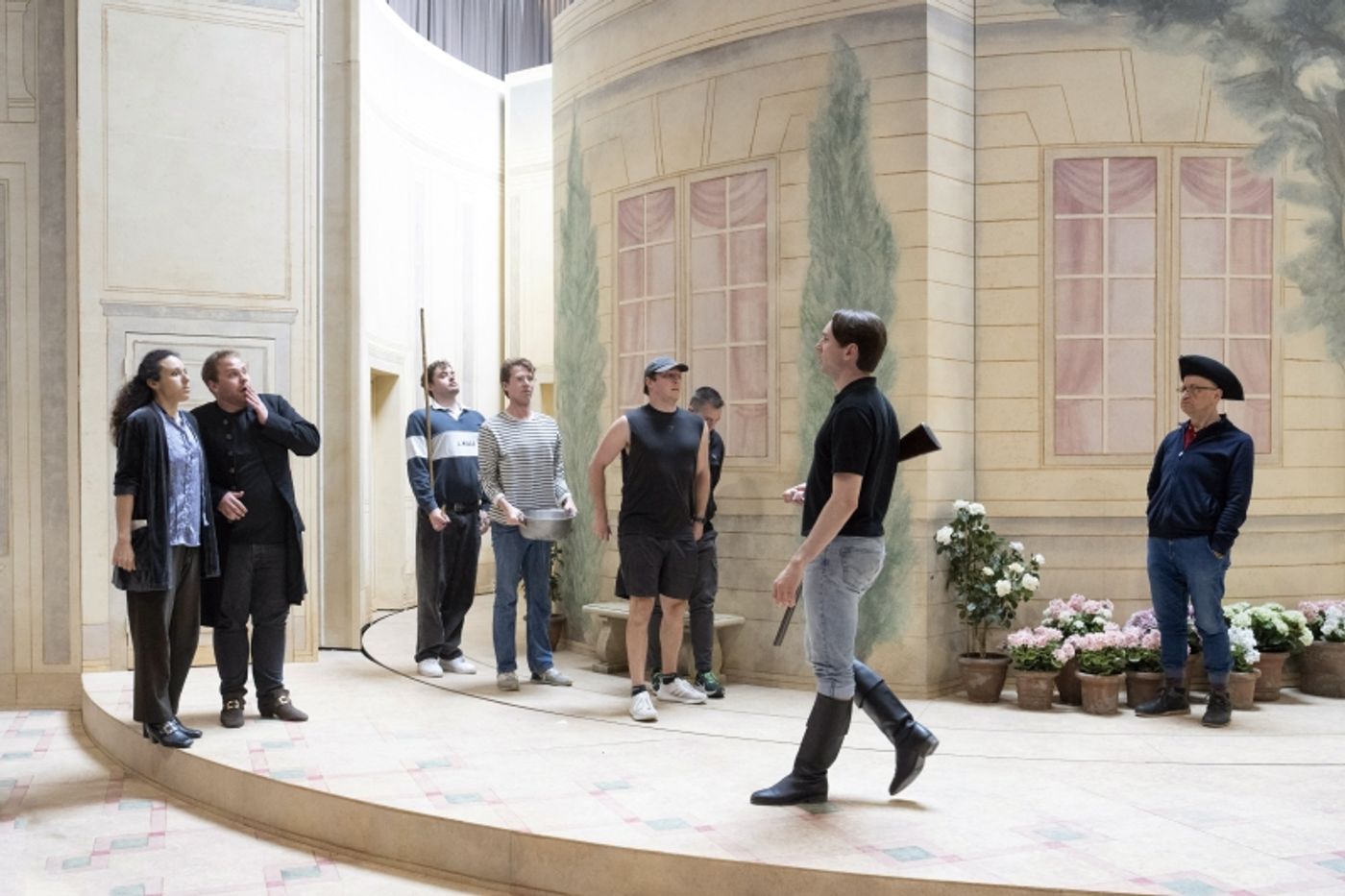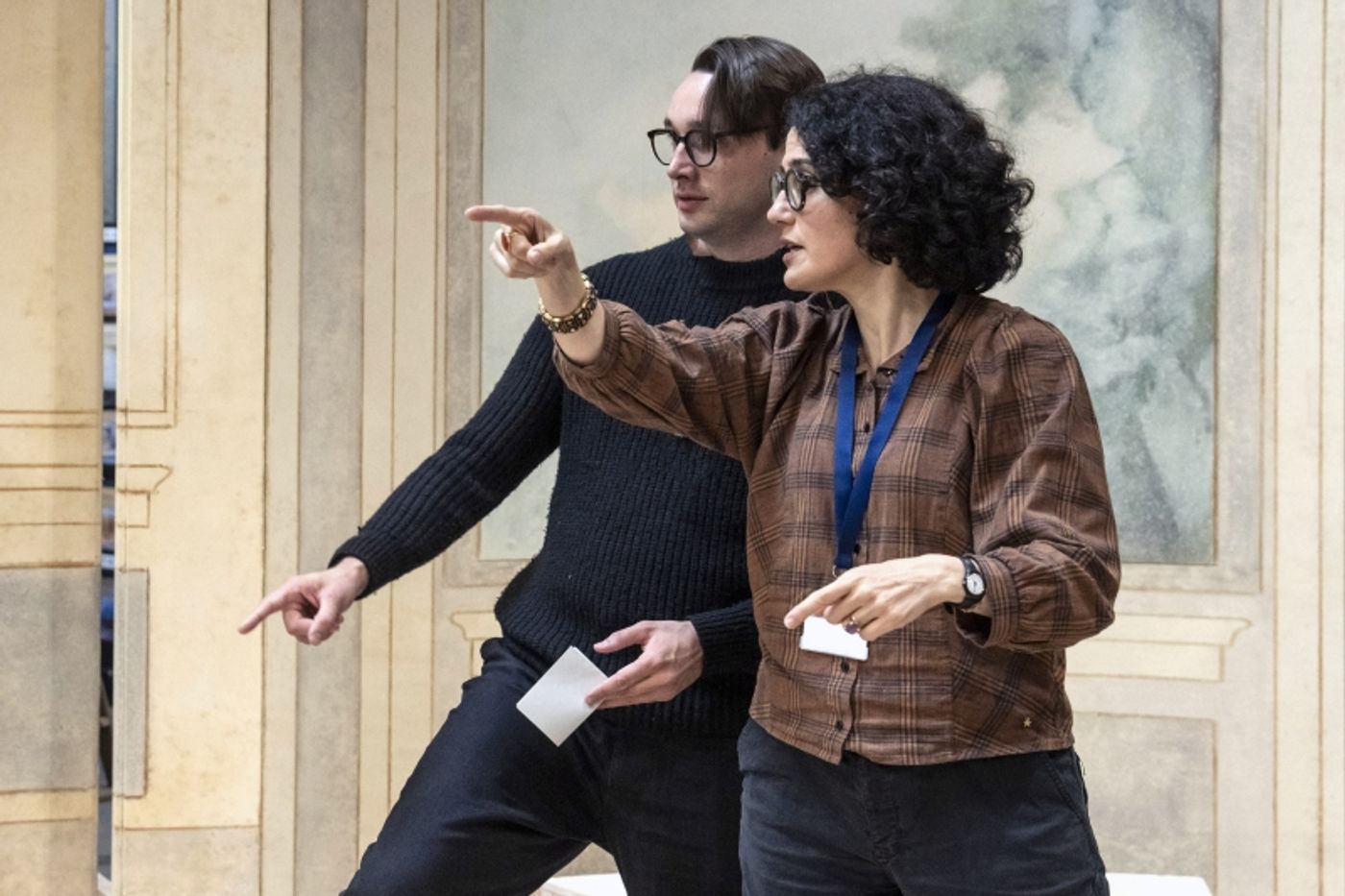Guest Blog: 'It Might Be The Best Opera Ever Written': Director Mariame Clément on Glyndebourne's New Production of LE NOZZE DI FIGARO
"When this thing we’re creating starts to have a life of its own – that’s when I know exactly why I do this job."
Le Nozze di Figaro is a piece I’ve been living with as long as I can remember. To me, it might be the best opera ever written: it makes me laugh, it moves me to tears, the plot twists still fill me with delight, and all the characters have potential for complexity and depth. It is the only piece I’ve ever revisited: this production will be my third, and not only do I not get tired of it, it seems to get more exciting each time.
The baseline for the plot (an aristocrat’s attempt to sexually abuse his servant’s bride is thwarted by the servants who join forces with the aristocrat’s wife) resonates with the time in which it was written (a few years before the French revolution), but – sadly – it also sounds quite familiar today: men using a position of power to obtain sexual favours haven’t exactly disappeared from our daily lives.
You could argue that this makes transposing Le Nozze di Figaro into a contemporary setting a tempting option, with the Count a film mogul, a politician or a rich businessman, and Figaro and Susanna his employees. To me, it is quite the opposite. I tend to transpose pieces when I feel that what makes them interesting isn’t immediately accessible to a modern audience – typically when the cultural or historic references that were obvious to original audiences are lost on modern viewers.
In the case of Le Nozze di Figaro, precisely because the transposition feels so obvious, it is unnecessary. We all understand what a Count/servant relationship is, and the resonances are so immediate that the effect is all the more striking if the piece is presented “in costumes”: one can’t help but reflect on how, in spite of revolutions and centuries having passed by, so little has changed in many respects.

Le Nozze di Figaro is a typical ensemble piece – there are main characters, of course, but no character is absolutely secondary, and they are all three-dimensional and endearing. The wit, energy and depth of the music and the situations inevitably bring joy to the room – this is precious to me as a director, as I am responsible for the working atmosphere.
A rehearsal at Glyndebourne is rarely with less than ten people, and that’s not even counting the singers. Director, designer, stage management, props, assistants directors, conductor, assistant conductor, language coaches, pianists… Luckily, we have a wonderful room, with a very rare and precious mix of concentration and laughs (a lot of laughs).
Glyndebourne staff are famous around the opera world for their professionalism, dedication and kindness, and we are particularly lucky with our cast. Anyone who still thinks of opera singers as impossible egocentric divas unwilling to act should come and visit – they’d instantly change their opinion upon seeing this group of friendly, laid-back, open-minded people, all exceptional actors and musicians, all eager to work and be challenged, and all deeply caring and respectful towards one another.

A typical rehearsal for a new scene will start with everyone sitting down for a detailed reading of the text, without music. In opera, people often act in a language they don’t speak, so even if they have a translation of their text, they’re not always aware of the precise meaning of a specific word or line… or of what their partner on stage is saying. Working thoroughly through the text enables them to be much more subtle and precise in their acting.
This is a collaborative process: the singers discuss their characters’ motivations, the languages coaches help with pronunciation, and of course the conductor already gives musical indications. This is also when I explain what is at stake in the scene and even start sketching a structure for what will happen in the space. Unlike theatre actors, singers don’t have control over time: they must follow the melodic line and the rhythm given by the score. In my experience, providing them with a clear script of what they will be doing ironically gives them freedom.

After this work on the text, we add the music. The dialogue with the conductor is an essential aspect of my work: together, we have to make the words and music intertwine and come to life. Our conductor, Riccardo Minasi, is highly collaborative, constantly feeding my work with musical ideas, and revising his own conception to match the staging.
As we run the scene musically, the singers start connecting the intentions we’ve discussed with their singing. Blocking the scenes in the set then feels easier when all this preliminary work has been done. But my favourite stage is the next step, when the “traffic” is clear: everyone more or less knows what they’re supposed to do and we start running the scene. This is when the real fun begins: I watch, give feedback and get new ideas; the assistants suggest improvements; the conductor tweaks details. And the magic happens: the performers start owning the scene and truly interacting with one other as if we weren’t there.
Later on, we will do full run-throughs, rehearse on the actual stage, add costumes, lights, bring in the orchestra… until we eventually perform for an audience. But that moment in the studio, with just rehearsal costumes and a pianist playing along, when this thing we’re creating starts to have a life of its own – that’s when I know exactly why I do this job.
The new production of Le Nozze di Figaro, directed by Mariame Clément, will be staged at Glyndebourne from 29 June – 21 August
Rehearsal Photo Credits: © Glyndebourne Productions Ltd. Photography by Richard Hubert Smith

Videos

